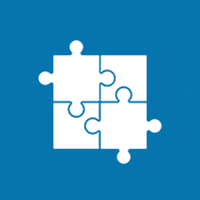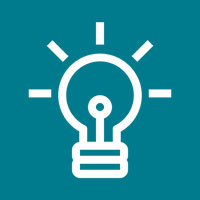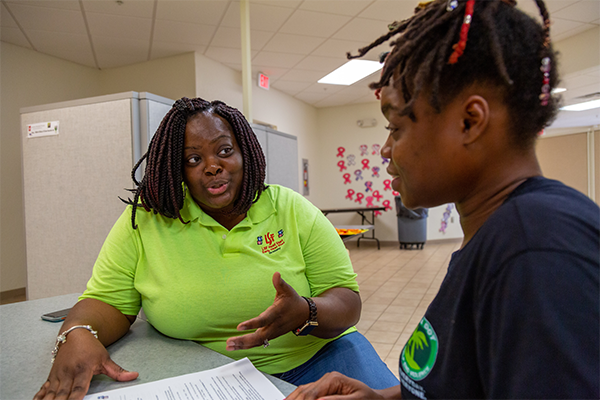 Getting Started
Getting Started
Topic 4: Pulling It All Together—Program Examples describes how four typical programs integrate program goals, expected outcomes, and action plans into their planning process to support program excellence. As you read these planning scenarios, think about your own program. Of course, the specifics differ, but what can your program learn about the planning process? Refer to Topic 1 for planning terms while reading through the scenarios.
Goals, Objectives, Outcomes, Progress, and Action Plans—What Do They Look Like?
The Head Start five-year grant application requires programs to submit an outcomes-focused plan that shows how program services will have a cumulative positive impact on children, families, and the community. After the initial baseline application, each subsequent continuation application will ask programs to demonstrate progress made each year toward achieving those program goals, objectives, and expected outcomes. By year five, programs will use findings from all five years to describe how their services have made a difference for children, families, and the community.
Programs need two specific skills to engage in five-year planning:
- The ability to develop and write BROAD program goals and measurable objectives
- The ability to translate goals and objectives into an action plan that supports progress toward expected outcomes
Aligning BROAD goals with clearly defined SMART objectives will help programs identify specific, expected changes; project when those changes will occur; and allocate the necessary resources to ensure success. Expected outcomes include changes in child and family knowledge and behavior, program practice, and community engagement, which occur as a result of your program's efforts.
Defining the monetary resources your program needs is an important part of building an action plan. With this knowledge, programs can include fiscal objectives and action steps to ensure adequate funding for the essential components of the program plan and program. This includes personnel, equipment, materials, and T/TA. Programs may want to use the Management Systems Wheel to review implications for all aspects of program operations.
Topic 4 provides four examples of program goals. The first example focuses on strengthening children's transitions to kindergarten or other placements. The second outlines an initiative that promotes language and literacy development for preschool children. The third examines a health-related goal. The fourth explores ways that programs partner with families to make progress toward family well-being. Each of these examples illustrates:
- BROAD program goals based on data from a community assessment, annual self-assessment, and ongoing monitoring and which require contributions from all parts of the program
- Objectives that are SMART: Specific, Measurable, Attainable, Realistic, and Timely
- Expected outcomes that show what success looks like if the goal is achieved
- Data, tools, or methods for tracking progress
- Expected challenges that might impede progress on goals and objectives
- Sequential actions/strategies to carry out over the program year
 Learning Objectives
Learning Objectives
Programs understand how the Head Start planning process comes together to advance their vision for the children and families they serve. They expand their knowledge of strategic planning in Head Start and see how they can use data, tools, and methods for tracking progress.1. HSPPS Curricula, 45 CFR § 1302.32(b).
Program Planning
Thoughtful planning is critical to programming. Explore these resources for guidance throughout the five-year Head Start grant cycle. Learn how to establish continuous cycles of improvement that involve key stakeholders in data-based decision-making. Find resources to help build on achievable program and school readiness goals and fiscal objectives. Discover materials that guide grantees in creating community and self-assessments, and achieve positive outcomes for children and families.
Program planning and service system design together make up one of the 12 management, planning, and oversight systems of the Management Systems Wheel.
Goal Setting
 Family goal setting is essential to the work of Head Start programs. It relies on the information that program staff gather through assessments and ongoing communication, such as the families’ strengths, passions, and challenges. As relationships are built and strong partnerships formed, Head Start staff help families set goals and work together to make progress toward those goals.
Family goal setting is essential to the work of Head Start programs. It relies on the information that program staff gather through assessments and ongoing communication, such as the families’ strengths, passions, and challenges. As relationships are built and strong partnerships formed, Head Start staff help families set goals and work together to make progress toward those goals.
Successful goal setting is done in seven steps in the context of the Family Partnership Process. Explore these resources to learn more about goal setting with families.
Program Planning Systems
Agencies aiming to deliver Head Start services must carefully craft and execute their programs. Use these materials to discover how effective planning practices ensure programs stay attuned to community needs. Learn how setting clear program goals, objectives, outcomes, and action plans can enhance child and family outcomes. Get insights and examples illustrating how to monitor progress toward achieving family outcomes.
Dive into a toolbox of resources that can readily bolster your program's strategic planning.